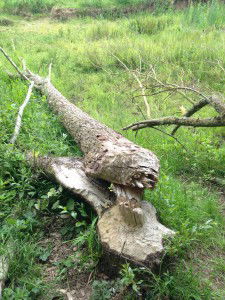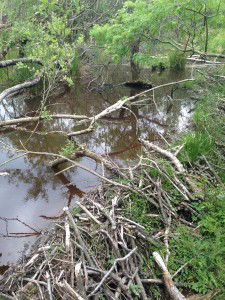Beavers love ponds, so we love beavers!
25th June 2015
Beavers are master engineers that can turn dried up landscapes into wetland wilderness. Our Director Jeremy visited a project in Devon which shows that beavers should be part of the mix to make the countryside fit for nature.

In early June I went to see the Devon Beaver Project. At a secure site in northern Devon, a private landowner and the Devon Wildlife Trust are testing out whether beavers could be used not just as water engineers but as grassland managers too. They’ve been using beavers in a large enclosure to control scrub and trees which were gradually taking over a small but special area of wet grassland, an important county wildlife site. These beavers are captive and, unlike the small group of wild beavers discovered on the River Otter in south Devon, they will be returned to captivity eventually.

Beavers naturally create both water and open areas by coppicing and cutting down trees, making patchworks of water, woodland and wet ground – and this is just what they are doing on the Devon site. Since being released into the fenced area in 2011, where they effectively live as wild animals, they have turned what was once a fairly dry site with a single small stream running through it into a jungle of wet woodland, grassland, glades and, above all, ponds. You can get some impression of what the site looks like on the inside from the photo – a tangle of wood, wet grass and water.
The site shows that in places where we’ve drained away most of the water, beavers, who have an innate drive to create ponds and interconnecting canals so that they feel safe and secure, can quickly make a big impact. It certainly seems that they should be part of the mix that’s helping to make the countryside fit for nature.
To see more about the Devon Beaver project visit the Devon Wildlife Trust website.
You can read more about beaver projects across the country, and see new video of the first wild-born beaver kit in the UK, on the Wildlife Trusts website.
